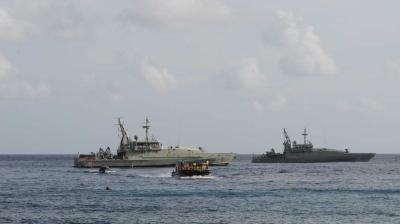In Search of Control
The international comparative report analysing access to asylum in Australia, Canada, Denmark, the Netherlands, and the United States, makes clear that the researched states all face the same balancing act in search of control of migration. Therefore, they could and should learn from each other's experiences in tackling this challenge. Firstly, there is a common humanitarian duty and responsibility to provide protection to those in need while demonstrating solidarity with regions facing heightened challenges due to refugee pressures and other geopolitical crises. Secondly, due to an aging population these states face increasing labour shortages, for which labour and asylum migration are needed. However, states want to remain in control over their borders and want to manage the influx and admission of migrants, additionally driven by the need for societal support in the face of future migration. Due to this balancing act, there are no ‘quick fixes’ in dealing with asylum migration. As these interrelated challenges are part of a global issue, innovative ways forward need to be based on solidarity and cooperation taking into account mutual interest; of those seeking protection, host countries in the region, transit countries becoming destination countries, communities within traditional destination countries, and of other destination states. To facilitate such cooperation, a clear legal framework with sound preconditions and safeguards is needed to ensure both effectiveness and the protection of the rights of refugees and migrants.
As access to territorial asylum in the EU is being (increasingly) restricted through non-entry measures, EU countries should offer alternative routes for those who require protection. This includes the increased use of resettlement quotas, legal pathways and asylum capacity building of host states in the region. Innovative initiatives such as community private sponsorship and complementary economic resettlement with a regional component have shown to increase societal support in destination countries for the protection of refugees. This should be done in addition to general resettlement quotas. Establishing centres similar to those in the US, where persons planning to migrate can access information about their options, chances, and alternative legal pathways to migrate to the EU, has the potential to address the pressure on asylum procedures near the external borders of the EU. Of course, a strong network with several host countries willing to offer temporary protection and safety during (asylum) application processes for such centres are a requirement. Lastly, national asylum systems need to look and move beyond the crisis mode. This requires targeted participatory planning that offers buffers for situations of an increased influx of refugees. This should be complemented by longer-term investments that allow for timely responses to an increasing caseload which are essential for any efficient asylum procedure.
Though it is important for destination states to benefit from reciprocal lessons learned, the differences between the states in the study should not be ignored. Examples are Australia's remote geographical location and lack of a supranational court, Canada’s significant distance from conflict zones and its STC agreement with the US, Denmark's opt-out from the European Asylum acquis in contrary to the Netherlands, and the new initiative in the United States that has yet to show its impact on the high number of people at its southern borders. Taking all this into account, some lessons could be drawn from these respective states:
Australia
Australia has shown that effective cooperation with transit and partner countries highly depends on the willingness of that state to cooperate. Hence, the recognition needs to exist for migration partnerships to be mutually beneficial. Full denial of territorial asylum as part of a deterrence campaign instead leads to very high costs, both for refugees and society.
Read 'The price of deterrence'.
Canada
Canada plays a key role for the global refugee protection system, by offering innovative refugee resettlement programs in solidarity with other countries. Canada’s inclusive and participatory approach to setting (multi-)annual asylum and migration levels and targets sets an example of a system with broad societal support that allows for swift and effective responses to asylum fluctuations.
Read 'A ‘safe haven’ for refugees?'.
Denmark
Denmark's opt-out from the Common European Asylum System provides legal room for strict asylum policies, as is evident in the so-called paradigm shift (from permanent to temporary protection, from integration to return). However, through its participation in both Schengen and Dublin, as well as its adherence to human rights treaties, Denmark is still closely aligned with EU asylum standards, and realises return is as unruly for the Danish as for other EU-states. Denmark's externalisation law currently only exists on paper, proving that the operationalisation of external procedures is shrouded in legal and practical difficulties. Despite this, Denmark has shown that a harsh asylum narrative (‘stratcom’) can indeed be effective as a means of deterrence.
Read 'Shifting the paradigm, from opt-out to all out?'.
The Netherlands
If the Netherlands would sustain the necessary investments in the, in essence, solid national asylum system, the country could overcome the crisis mode and take legally sound and long-term measures to deal with asylum migration effectively. These measures should be based on lessons learned within the EU acquis (including temporary protection for Ukrainians and the EU’s failing Dublin system) as well as new innovative ideas that go beyond the sole territorial scope of asylum, ensuring full respect for human rights and adherence to the principle of solidarity.
Read 'Overcoming the crisis mode'.
The United States
The United States demonstrates the necessity of migration cooperation and the possibility of embracing innovative ideas and models when faced with large migratory pressures. The EU can learn from the US's recognition that high walls need to be accompanied by big gates, as well as its holistic approach to immigration in the region. This involves cooperation with countries in the region, the establishment of legal pathways, legislation addressing 'circumventing legal pathways' and a robust return strategy.
Read 'Outmatched: The U.S. Asylum System Faces Record Demands' (by the Migration Policy Institute)
In conclusion, it would be in the interest of destination countries to support much more rigorous protection in the region, for example by enabling more resettlement through regional hubs. Implementing realistic but collaborative initiatives will take us further than trying to find solutions to this global issue individually.
Find here the full report and the synthesis report.











